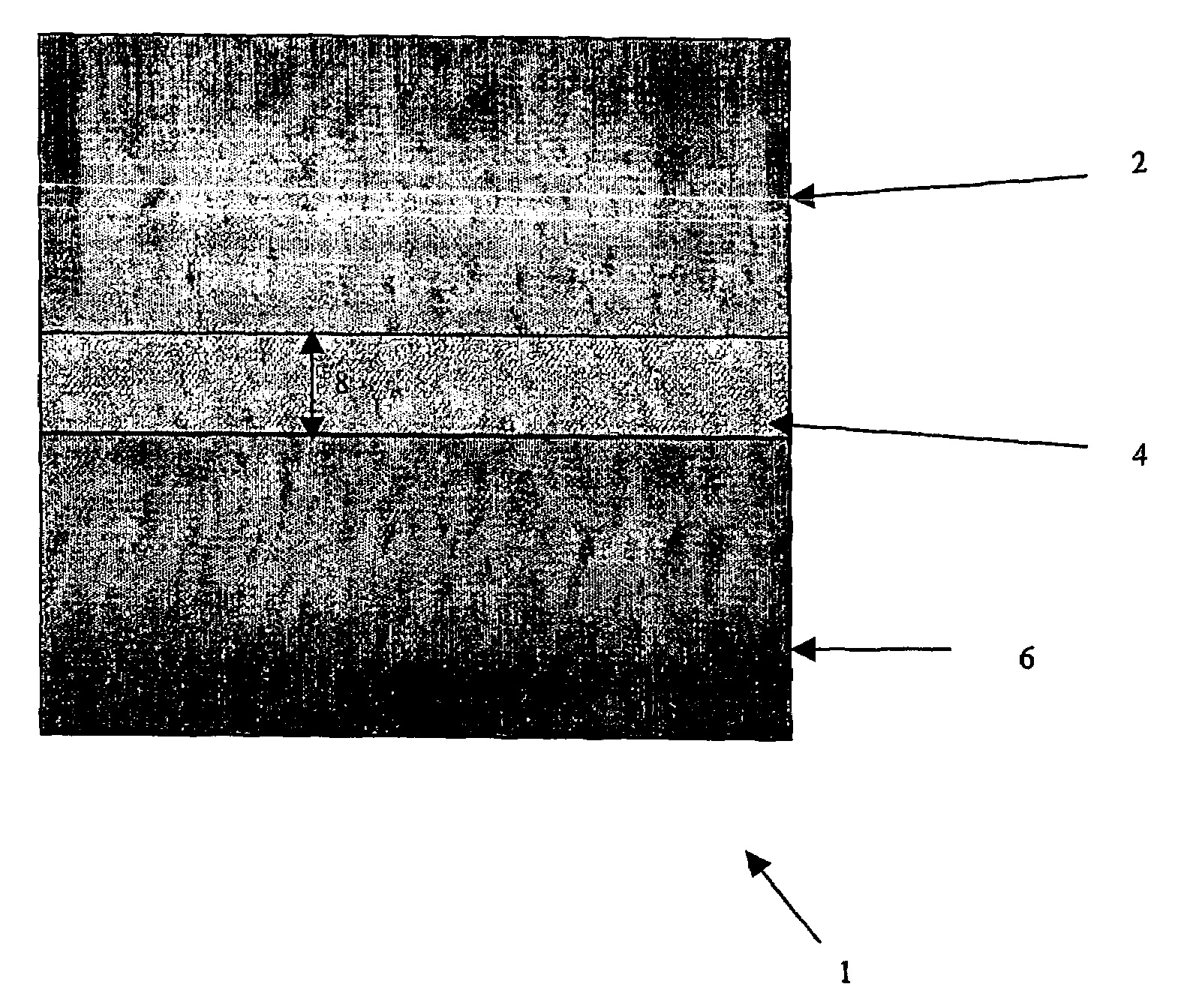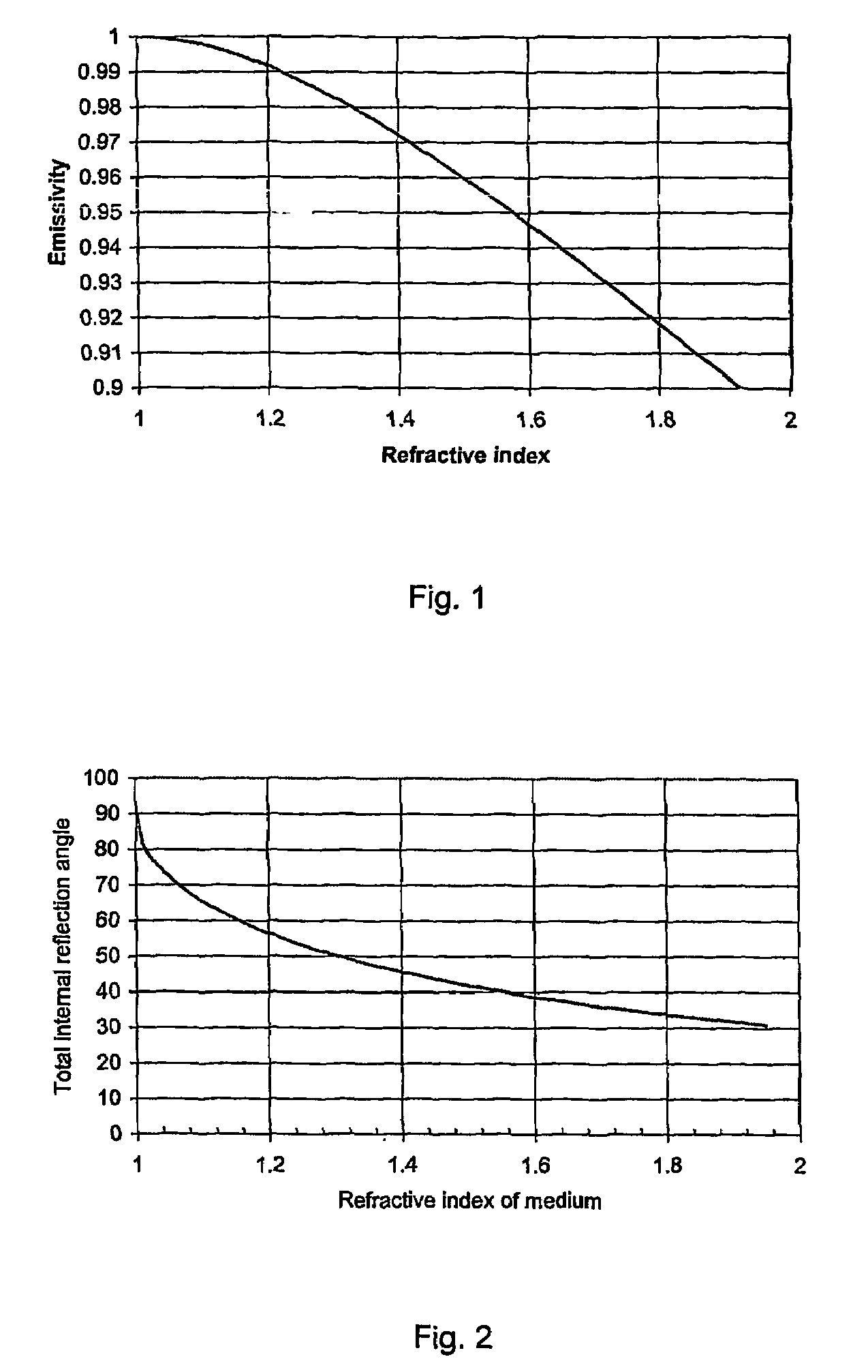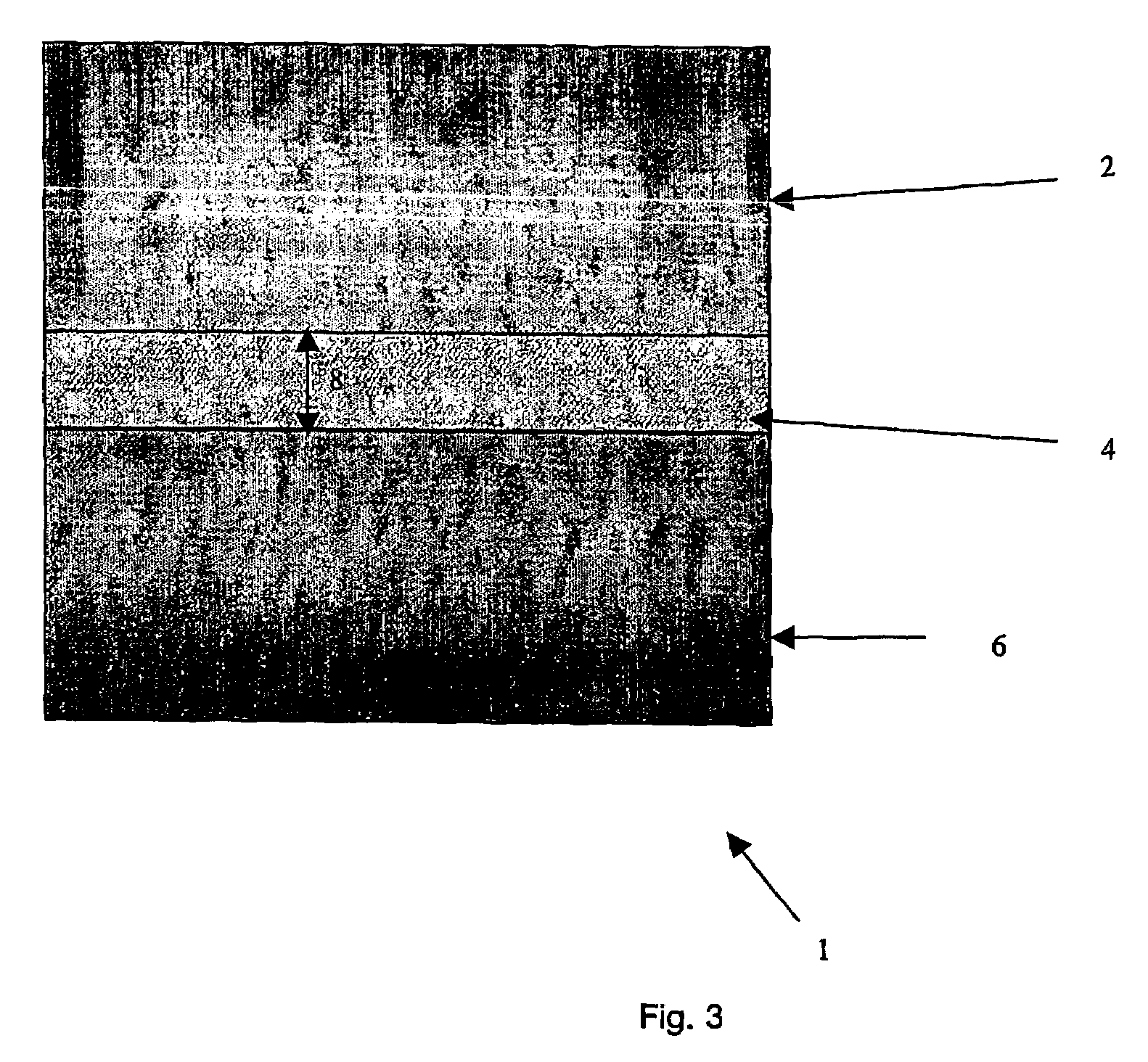Thermal infrared reflective pigments for coatings
a reflective pigment and thermal infrared technology, applied in vacuum evaporation coating, electrophoresis, electrolysis, etc., can solve the problems of long path length, low reflectivity of irsub>t /sub>waveband formulations, and limited use of such highly irsub>t /sub>reflective materials
- Summary
- Abstract
- Description
- Claims
- Application Information
AI Technical Summary
Benefits of technology
Problems solved by technology
Method used
Image
Examples
Embodiment Construction
[0037]By way of background to the present invention, all bodies above OK (−273° C.) emit electro-magnetic (EM) radiation as a result of processes in their atomic and molecular structure. At temperatures encountered in human habitations (0 to 30° C.) this electromagnetic radiation is predominately at frequencies in the range of 3×1012 to 3×1014 Hz, equivalent to a wavelength of 1 to 100 μm, commonly referred to as the ‘infrared region’ of the EM spectrum. At temperatures in the range 0-30° C. more than 90% of the radiant energy arising from a body is in the wavelength interval 3 to 50 μm, this part of the electromagnetic spectrum is called the Thermal Infrared (IRT) region.
[0038]To a first approximation, the IRT energy emitted by a surface is given by the Stephan-Boltzmann equation:
W=εσT4 Wm−2,
where ‘W’ is the radiated power, ‘ε’ is the emissivity, ‘σ’ is the Stephan-Boltzmann constant and ‘T’ is the temperature in Kelvin.
[0039]In a simplified form, Kirchoffs law relates the emissivi...
PUM
| Property | Measurement | Unit |
|---|---|---|
| thickness | aaaaa | aaaaa |
| thickness | aaaaa | aaaaa |
| thickness | aaaaa | aaaaa |
Abstract
Description
Claims
Application Information
 Login to View More
Login to View More - R&D
- Intellectual Property
- Life Sciences
- Materials
- Tech Scout
- Unparalleled Data Quality
- Higher Quality Content
- 60% Fewer Hallucinations
Browse by: Latest US Patents, China's latest patents, Technical Efficacy Thesaurus, Application Domain, Technology Topic, Popular Technical Reports.
© 2025 PatSnap. All rights reserved.Legal|Privacy policy|Modern Slavery Act Transparency Statement|Sitemap|About US| Contact US: help@patsnap.com



